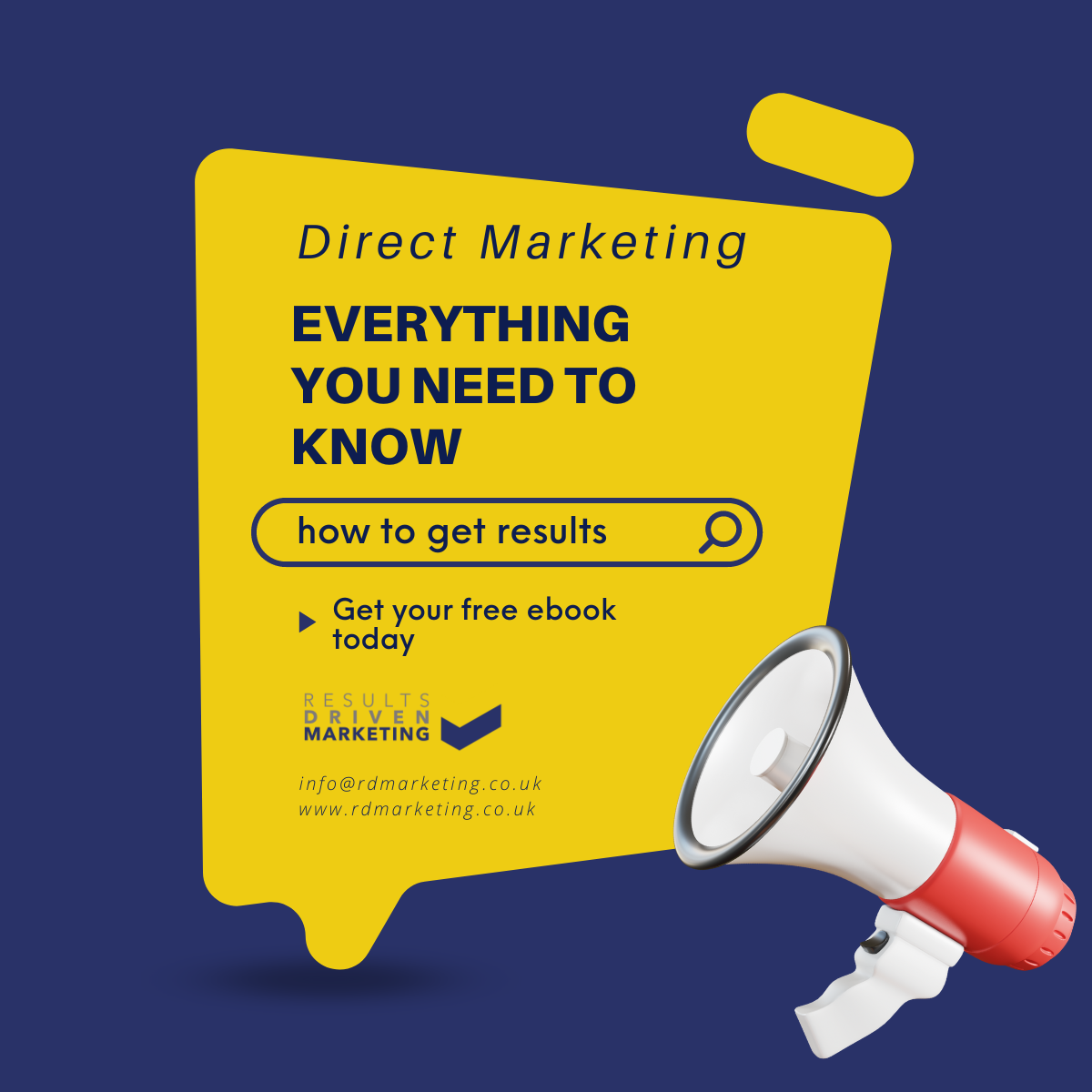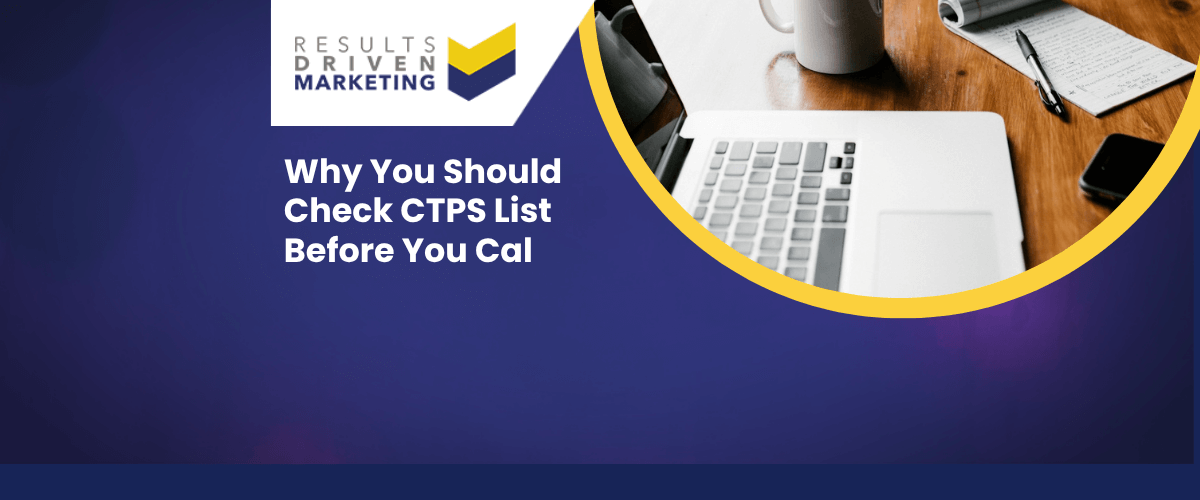
Direct Marketing – Everything you need to know
Benefits of Direct Marketing – Everything you need to know
Direct marketing is a popular and highly effective marketing technique which involves directly targeting current, past and potential customers to raise awareness of products or services, increase sales and drive brand engagement.
It’s a form of interactive marketing which is measurable and can be tailored to fit a specific audience. It is more targeted than other forms of marketing and can be used to reach a variety of customer segments.
It is a low-cost and effective way of reaching customers with detailed information about a particular product or service. Ads can be tailored to a specific region or customer segment, allowing for an increased potential for success.
A large percentage of companies today use direct marketing to spread the word about their wares. It’s more crucial than ever to stand out from the crowd and provide marketing that encourages customers to make purchases.
More businesses than ever before are competing for consumers’ attention. For this reason, it is more important than ever to provide targeted advertisements that can reach a wide audience.
One effective strategy for this is direct marketing.
What exactly is Direct Marketing to businesses?
Direct marketing is a form of promotional technique that involves sending messages to consumers in an unmediated manner.
This method, in contrast to indirect marketing, which makes use of digital marketing strategies such as search engine optimisation and online reviews, circumvents the need for an intermediary altogether.
You are not relying on a third-party organisation or magazine to translate your message; rather, you are engaging in one-on-one communication with the people you are trying to reach.
Direct marketing to businesses seeks to generate a robust reaction from prospective customers and convince them to take some sort of action as a result of that reaction.
Because of this, one of the most important aspects of direct marketing is a compelling call to action, often known as a CTA.
A message that has a strong connection with the particular customers to whom you are speaking is another thing that you should strive for.
The building blocks of a successful direct marketing effort
If you want your campaign to succeed, you need to focus on these five areas.
- Your offer
- Your list
- Your creativity
- Your call to action
- Your tracking method
Your direct marketing to businesses offer
Represents the value you place on your customers’ and prospects’ time.
It might be a price cut, a free gift, or something else different.
Whatever you decide, just make sure it resonates with your intended recipients.
Here are some examples you could think over and adapt:
- Free trials
- Limited time discounts
- Customisable membership packages
- Points or loyalty programs
- FREE shipping with purchase
- 50% off select items
- Buy one, get one free
- Discounts when customers pre-pay for a year’s worth of products
- Gift certificates with purchase
- Contests encouraging customers to rate or share products on social media
- Refer a friend for free gifts
- Early access to exclusive products
- Free product samplers
- Surprise giveaways with purchase
Your direct marketing list
What is a direct marketing list?
Direct marketing lists are lists of people or organisations that marketers purchase or generate to communicate with potential customers or partners with the objective of increasing sales.
They include names, addresses, contact information, and other types of data that allow marketers to craft targeted campaigns.
Generally, marketers use direct marketing lists to create targeted campaigns that are tailored to the unique needs of their consumers.
Additionally, direct marketing lists offer segmented groups of contacts, allowing marketers to more accurately target their desired demographic.
For more information on how you can buy targeted direct marketing lists, drop us a line here.
How to build a direct marketing list?
1. Start by defining your target audience
Know who you want to reach and what markets you want to explore.
2. Conduct a thorough analysis of your market
Understand who is buying your products, who is influencing industry trends, and who are your top competitors.
3. Brainstorm strategies for gathering your list
Consider online research methods, surveys, cold calling, and purchasing pre-made lists.
4. Utilise data sources
Such as the Census Bureau, direct marketing associations, subscription services, and more.
5. Build your list
Incorporate data such as mailing addresses, emails, phone numbers, and other personal information.
6. Clean up your list
Contact databases to keep names up-to-date and remove any outdated information.
7. Segment and target
Group your list by interest, location, age, gender, and other demographic details.
8. Analyse the results
Track the success of your campaigns to gauge the overall effectiveness of your list.
9. Incorporate feedback
Analyse feedback on each contact to improve future iterations of your direct marketing list.
How to segment a direct marketing list?
1. Identify the goals of the campaign:
Before segmenting your direct marketing list, it is important to identify the goal of the campaign.
Do you want to increase sales, promote a new product or service, or raise awareness of a brand?
2. Define potential customer groups:
Define the characteristics of your target customer groups.
This could include age, location, gender, purchase behaviour, and interests.
3. Collect customer data: Gather data that relates to the characteristics outlined in step 2.
This will help you to segment your list.
4. Analyse customer data:
Use analysis tools to identify patterns in customer behaviour and segment the list accordingly.
5. Create targeted messages:
Create customised messages for each segment that fit the objectives of your campaign.
6. Test and refine:
Once your list is segmented, test your campaigns and adjust your messaging and segmentation as needed.
Your creativity
Format your products and services in a brochure, postcard, or electronic mail.
Think beyond the box and come up with an effective strategy for marketing your message.
Direct mail campaign ideas:
- A roll of edible stickers enclosed in the envelope that spell out the message “Come Check Out Our Sale!”
- A magnetic postcard featuring a novelty 3D sculpture
- A pop-up card featuring a special discount code
- A “scratch and reveal” direct mail piece
- A refrigerator magnet with coupon codes
- A 3D model enclosed in the envelope
- A direct mail package containing a miniature gift
- A fold-out “Mini Catalog”
- A membership card with a QR code for mobile scanning
Email marketing campaign ideas:
- Get creative with formatting. Dare to experiment and try using header images, hero images, emojis and GIFs.
- Enrich content with videos or multimedia. Adding videos, animation, or interactive elements can result in higher engagement.
- Incorporate user-generated content. People love to see what other customers are doing, so if applicable, add images of “happy customers” or other user-generated content.
- Incorporate interactive elements. Get people involved by asking for their opinion, implementing quizzes and surveys, or more.
- Re-engage inactive customers. Send targeted reminders to inactive customers, informing them of their forgotten items or offering special discounts to re-engage them.
Your direct marketing call to action
It should be simple and straightforward.
The purpose of the call to action is to advise the intended audience on what they must do with the offered product or service.
In order to achieve success with your campaign, you need a compelling call to action.
Call to action ideas:
- “Order your copy of our new product today!”
- “Claim your discount with code XYZ before it expires!”
- “Sign up for our newsletter today and get insider news and discounts!”
- “Call now for exclusive access to our limited-time offers!”
- “Subscribe to receive special offers and free samples!”
- “Proceed to checkout to get your free shipping!”
- “Share your special coupon code with friends and family!”
- “Visit our store to learn more about our products!”
- “Sign up to receive exclusive deals and discounts now!”
- “Follow us on social media for the latest updates and promotions!”
Your direct marketing tracking method
It is the barometer by which you’ll evaluate the campaign’s efficacy.
You should think about the metrics that will be used, the volume of sales, and the quality of leads.
Direct marketing strategies
Various direct advertising strategies exist, each with distinct traits.
Do your homework and learn about your options so you can get started on the right foot.
Take into account the benefits of direct marketing approaches as you make your choice.
Emails marketing
Due to their adaptability, email marketing efforts are excellent at reaching the appropriate people with the correct message.
Follow-ups and email schedules can be automated.
Reaching thousands of potential customers at a low cost is possible here.
Some of the other benefits of email marketing:
1. Cost-Effective
Email marketing is a very cost-effective way of reaching out to potential and existing customers.
Automation tools can make it even cheaper by reducing the communications costs associated with tracking and measuring performance.
2. Highly Targeted
Email allows you to segment contacts by demographics and interests.
This allows you to send highly targeted messages to those who are most likely to respond to them.
3. Improves Brand Awareness
Email marketing helps to increase the visibility of your brand.
Your message will reach a much wider audience than traditional advertising methods and is more likely to get shared by loyal customers.
4. Measurable
Email marketing campaigns are trackable and measurable.
You can measure recipient engagement, how many people clicked the emails and much more.
This allows you to gain valuable insights into the effectiveness of your campaigns and make improvements for future ones.
5. Quick Delivery
Emails are sent in real time and can reach customers immediately, even if they are in a different time zone or country.
This makes them ideal for promoting timely events or special offers.
Get the best out of email marketing
How does email marketing work?
Email marketing is a type of direct marketing to businesses that involves sending emails to customers and prospects.
These emails can be used for a variety of purposes, such as informing customers about upcoming sales and promotions, sharing helpful content, building relationships with prospects, and driving conversions.
Email marketing is one of the most effective direct marketing strategies and has been used by businesses of all sizes and industries.
It works by sending messages to target audiences with promotional offers, information about new products or services, and updates on upcoming events or news.
It allows businesses to connect with their customers, drive repeat business and build loyalty.
Email marketing also allows businesses to track the success of their campaigns, such as open and click-through rates, to see what’s working and what isn’t.
Getting started with email marketing?
1. Create an Email Distribution List
2. Choose an Email Marketing Platform
3. Design Your Email
4. Test and Send
5. Monitor Your Metrics
6. Analyse & Refine
How to send email marketing campaigns?
1. Develop Your Email List
2. Create Your Email Content
Once you have your email contact lists, you can start creating your email content.
This content should consist of a compelling subject line, visuals, and text that communicates the goal of your email campaign.
It should also be optimised for both desktop and mobile devices for maximum reach.
3. Set Up Your Email Campaign
Once you have your email content ready to go, you can set up your email campaign.
Depending on the email service provider you use, you can create an automated email campaign that goes out over a specific time period.
This is a great way to ensure your content reaches the right people and that you get maximum engagement.
4. Send and Monitor
Email marketing analysis
Email marketing analysis is the process of reviewing and assessing the performance of an email marketing campaign.
It typically involves analysing mailing list performance, open and click-through rates, and other indicators of user engagement.
It can also include assessing the email advertising technology used as well as the content optimisation process.
Analysing email marketing performance allows marketers to evaluate their strategies and tactics and make improvements to ensure their messages are reaching and resonating with their target audiences.
Main email marketing metrics to measure:
- Open rate
- Click-through rate
- Conversion rate
- Unsubscribe rate
- Time spent reading
- Bounce rate
- List growth rate
- Cost per open
- Cost per click
- A/B test results
Telemarketing
Telemarketing is a marketing method that involves sales representatives making contacts, by phone, with potential customers in order to solicit their interest and/or business.
Telemarketers will typically ask questions, discuss products or services, take orders, offer discounts or deals, or suggest offers to the customer.
Advanced technology now means that you can leverage such things as automated dialers, speech recognition, and customer relationship management software, to help you contact customers or process orders.
The goal of successful telemarketing campaigns is to increase sales and customer satisfaction.
What are the major benefits to running telemarketing campaigns?
Cost effective
Telemarketing campaigns are a cost-effective way to reach large numbers of potential customers in a short space of time.
The fact that calls can now be automated can massively reduce the time between calls reducing personnel costs.
Easy to track
It’s easy to measure the success of a telemarketing campaign, making it easy to track customer trends, sales, and reactions.
Segmentation
Telemarketing can be used to target separate audiences or market segments, allowing brands to tailor their message to different groups.
Relationship building
It’s possible to build relationships with existing customers and potential new customers during the call, both of which are beneficial to the organisation in the long run.
Quick results
Customers can be instantly targeted and contacted, and questions can be answered quickly.
This means a response can be received and feedback taken in a few hours.
Increased revenue
Telemarketing campaigns are versatile and have the potential to capture leads and convert them into paying customers.
This can help to increase revenue for the company.
Continuous improvement
By gathering customer feedback during the call, telemarketing campaigns can be improved over time to make them even more successful.
This can help ensure long-term success.
Where to start when it comes to telemarketing campaigns?
Set Your Goals
First, you should establish your telemarketing goals.
Consider your target audience, specific actions you want them to take (e.g., sign up for emails, book a consultation, purchase a product), and how you plan to measure and track success.
Research Your Audience
You need to know your target audience inside and out.
Research who they are, their wants, needs, and interests to make sure you’re targeting the right people and that your messages resonate.
Develop Your Script
Your script will serve as your roadmap and should include an introduction, the offer, and a clear call-to-action.
Be sure to include questions and pause points to create natural flowing conversations and allow customers to ask questions or provide feedback.
Determine Your System
You will need a system to manage contacts and store customer data. Consider an all-in-one customer relationship management (CRM)
How to run successful telemarketing campaigns?
Set SMART Campaign Goals
The only way to properly evaluate if your campaign is effective is to set SMART (Specific, Measurable, Attainable, Relevant, Time-based) goals for it.
This will provide structure and keep your campaign on track.
Establish Criteria for Target Audience
When crafting a successful telemarketing campaign, it is important to establish criteria for your target audience, such as their industry, size, location, demographic, purchasing habits, etc.
This will ensure that you are targeting the right people.
Design a List
It’s important to have an effective list in order for your telemarketing campaign to be successful.
Make sure that your list contains accurate and up-to-date information, such as contact names, phone numbers, and email addresses.
For advice on where to buy high-quality telemarketing lists, visit us here.
Prepare Scripts
Scripts are essential to successful telemarketing campaigns. Take the time to craft scripts that reflect your company’s core values, introduce your product/service, demonstrate customer benefit, and end with a call to action.
Utilise Technology
Technology is key to a successful telemarketing campaign.
Whether you’re using an automated dialing system or a sales tracking system, the right technology can help you efficiently manage your telemarketing campaign.
Monitor Your Metrics
Telemarketing is all about metrics.
Track your success with data such as the number of calls made, response rate, follow-up rate, conversions, and ROI.
This will help you see how effective your campaign is and where adjustments need to be made if necessary.
Leverage Follow-Ups.
Following up on leads is an essential part of a successful telemarketing campaign.
Research shows that a follow-up call within 48 hours can increase conversion rates by as much as 50%.
Make sure your scripts have a strong call to action that encourages customers to reach out and schedule an appointment.
Adjust Your Strategy
Telemarketing success is all about adjusting your strategy to fit the needs of your customers.
If response rates start to decline or you’re not getting the results you want, don’t be afraid to modify your strategies.
Test different types of messaging and scripts to see what resonates best with your customers.
Regularly track and analyse data to determine where you should make adjustments.
Reward Success
Motivate your telemarketers to succeed by offering incentives for good performance.
Establish a system of rewards based on metrics like response rate and conversions.
This will help encourage your team to perform their best and stay motivated.
Ask For Feedback
At the end of your calls, be sure to ask customers for feedback on your service.
Not only will this provide valuable insights into your telemarketing strategy, it’s also a great way to build relationships and make sure customers feel heard.
Encourage customers to be honest and transparent with their feedback so that you can make necessary adjustments.
Direct Mail
Direct mail campaigns involve sending physical mail pieces to targeted prospects or existing customers to promote a product or service.
They typically include an eye-catching piece of mail, such as a postcard or brochure, that sells a product or service.
The mail also usually includes a call to action which encourages prospects to take some type of action, such as visiting a website, calling a number, or signing up for a free trial.
Direct mail campaigns are created to specifically target a particular audience and are often used to supplement an overall marketing strategy.
What are the benefits of direct mail campaigns?
Targets a specific audience
One of the benefits of direct mail is that it allows marketers to target a very specific audience.
This means that businesses have the ability to carefully choose the demographic they want to target and the message they want to convey.
Cost effective
Direct mail campaigns are more cost effective than other forms of advertising.
This is because direct mail does not require any materials or labor to create, as it is usually purchased in bulk.
This can help businesses save costs in the long term.
Measurable results
Another benefit of direct mail is that it allows businesses to track results and measure the success of the campaign.
This can be done through the use of coupon codes, special offers and redemption metrics.
This can provide businesses with valuable insight into their customers’ behavior and how they respond to marketing campaigns.
High response rates
Direct mail typically has one of the highest response rates of any form of advertising. This is because it is tangible and has the potential to evoke an emotional response or touch people in a personal way. This makes it one of the most effective tools for marketers.
Lasting impact
Finally, direct mail has the potential to make a lasting impact on its recipients.
Instead of just fading away into the background, a well-crafted direct mail campaign can have a lasting impression.
This can be especially true if the message is tailored to its target audience.
How to get started with direct mail?
Determine your objective
Before beginning any direct mail campaign, it is important to know what your goals are.
Is your goal generating leads, increasing sales, introducing a new product, or increasing brand awareness?
Knowing your objectives will help you plan the rest of your sales strategy.
Prepare your list
It’s important to gather the contact details of people who are likely to be interested in what you have to offer.
Through a combination of market research and data, you can create a personalised list of contacts to send your Direct Mail to.
Design your mailing materials
Your mailing materials should be created with both aesthetics and readability in mind.
Utilise catchy design elements, attractive colours, and easy-to-read fonts and text to attract the attention of your customers.
Proofread
Before sending off any direct mail materials, make sure to proofread them carefully to ensure there are no spelling, grammar, or factual errors that could undermine the credibility of your message.
Choose a mailing method
Direct mail campaigns can be sent either digitally or through traditional hard-copies.
Depending on the nature of your campaign, you’ll need to denote time, materials, and money for the respective mailing type.
Track and analyse
Once you’ve sent out the direct mail materials, start monitoring response rates, customer engagement, and other performance metrics. Keeping track of your direct mail campaign’s results will help you refine your future campaigns for better performance.
Follow-up
After your initial campaign, consider including a follow-up mailing with additional relevant information to further engage your customers.
Not only is this a great way to stay in touch with customers, but also to keep your brand top-of-mind.
Direct Marketing Tactics
Brochures
They can be used for efficient direct marketing to a specific demographic.
Brochures are a great tool for advertising your business and its offerings.
Brochures, which often incorporate images and details written in tiny chunks, are more successful than letters.
Catalogs
For example, catalogues are a common kind of direct marketing used by many stores.
Using catalogues, you may advertise all of your products to interested customers.
Both digital and physical catalogues are available for customers to peruse and place orders from.
Fliers
Reaching out to those who aren’t already aware with your brand can be done at low cost with flyers.
You can distribute flyers at events, in public spaces, or even by mail to reach your intended audience.
Flyers are a great way to reach a local audience and increase brand awareness in a specific area.
Newsletters
Sending out a newsletter to current and future clients is a great way to keep in touch with them and show them what you’ve been up to.
For repeat business from a niche audience, send them a newsletter.
Postcards
Sending out postcards is a cheap approach to reaching a wide audience of potential customers.
Postcards can be used to promote a single item, or they can be used to drive traffic to an online store or brick-and-mortar location.
Postcards are frequently used for events like grand openings, transactions in real estate, and product promotions.
Coupons
Discount coupons are a great method to get new customers to sample your business’ offerings.
The strategy encourages shoppers to spend less money.
Coupons can be distributed through direct marketing efforts or included in other promotional pieces like newsletters and flyers.
Summary
The first thing you need to do when engaging in this type of marketing is to determine who your target audience is by conducting market research and using analytics.
When you have a better idea of who you want to communicate with, you will have a better idea of how to split the promotional prospects and the most effective manner to communicate with each group.
This could consist of telemarketing, email marketing or direct mail.
After you have chosen a medium of communication, the next step is to develop a message that will captivate the attention of the intended readers and motivate them to take some sort of action.
The very last thing you need to do is keep track of your findings, evaluate them, and then make any necessary adjustments.
Direct Marketing’s Benefits
Some benefits of direct marketing efforts include:
Cost Effective
Direct marketing is much more cost-effective than traditional marketing methods.
By targeting only those individuals that are likely to purchase your product or service, you can save on cost by not having to market to the masses.
Measurable Results
Direct marketing allows you to measure the progress of a campaign quickly and accurately.
Every customer interaction such as website visits, email opens, and purchases can be tracked, allowing for precise reporting and analysis.
Increased ROI
Direct marketing provides a greater return on investment than other forms of marketing.
Instead of using a “business as usual” approach, campaigns can be tailored to provide targeted information and promotions to specific customer segments which will increase sales and lead to higher customer retention rates.
Greater Access to Customers
Direct marketing provides businesses with the ability to reach potential customers and build relationships, in addition to selling their products or services.
This can result in higher sales and customer loyalty.
Increased Brand Awareness
Direct marketing can be used to create awareness of a brand or product by targeting a specific customer segment.
This can boost customer engagement and create brand recognition.
Boosted revenue
Having a clear call to action that is directed at the appropriate audience is an efficient approach to increase sales and contribute to the achievement of a marketing campaign.
New connections
If the new demographics you’re reaching out to respond positively to your direct marketing efforts and make a purchase, you’ll have a larger pool of prospective buyers from which to draw.
Direct communication
As its name suggests, it’s aimed squarely at a specific audience, and unlike other forms of advertising, it allows for the customisation of messages to specific individuals.
Real, observable progress
Using unique promo codes for each sales channel makes it simple to identify the source of individual purchases, which is invaluable for assessing campaign efficacy and planning future pushes of a similar nature.
Methods that minimise costs
The cost of direct marketing tools like email and text messaging is relatively low.
Direct Marketing’s Drawbacks
It can be effective, but it’s not without business challenges.
Ad fatigue
If consumers are subjected to repeated exposure to adverts for the same business, they may become annoyed and opt-out of receiving any further communications from that business.
Expense
Telemarketing requires an investment in time and money to set up, while direct mail requires additional funds to cover the cost of printing and postage.
A lot of competition
Customers can be hard to come by when using direct mail as a marketing strategy because of the stiff competition between different campaigns.
Confusing regulations
There are precise processes and laws a firm must follow in order to access private information, and failure to do so can have serious legal repercussions.
To Wrap it Up
That settles the matter. If you want to boost sales and profits, direct marketing is a strategy within your reach.
It allows you to reach the consumers who are most receptive to your message.
This form of marketing eliminates the middleman, giving you direct access to the consumer base and the opportunity to forge meaningful connections with each and every one of your customers.
Who We Are
We provide email marketing services with our email automation softwares.





